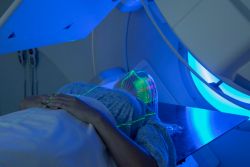Radiation in Healthcare
Non-Ionizing and Ionizing Radiation
There are two kinds of radiation: non-ionizing radiation and ionizing radiation.
Non-ionizing radiation has enough energy to move atoms in a molecule around or cause them to vibrate, but not enough to remove electrons from atoms. Non-ionizing radiation can heat substances. Examples of non-ionizing radiation are radio waves, microwaves, infrared radiation, and the visible light spectrum.
Non-Ionizing Radiation
We are exposed to low levels of non-ionizing radiation every day. Exposure to intense, direct amounts of non-ionizing radiation may result in damage to tissue due to heat.
Ionizing Radiation
Ionizing radiation has so much energy it can knock electrons out of atoms, a process known as ionization. Ionizing radiation can affect the atoms in living things, so it poses a health risk by damaging tissue and DNA in genes. Ionizing radiation comes from x-ray machines, cosmic particles from outer space, and radioactive elements. Radioactive elements emit ionizing radiation as their atoms undergo radioactive decay.
Radioactive decay is the emission of energy in the form of ionizing radiation. Ionizing radiation can be emitted in the form of alpha particles, beta particles, or gamma rays.
Knowledge Check Choose the best answer for the question.
1-1. X-rays contain _____.
You forgot to answer the question!

